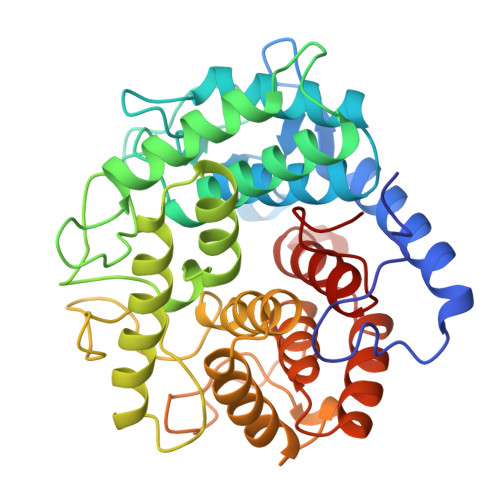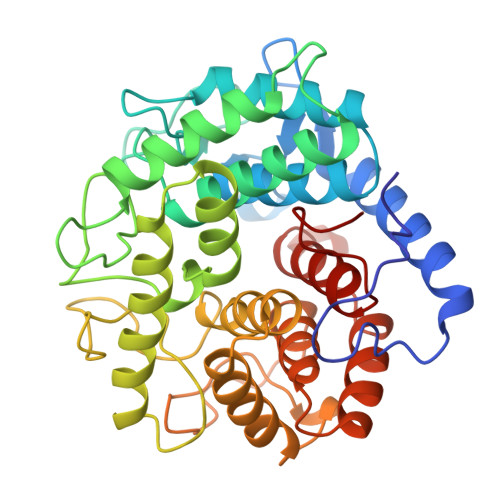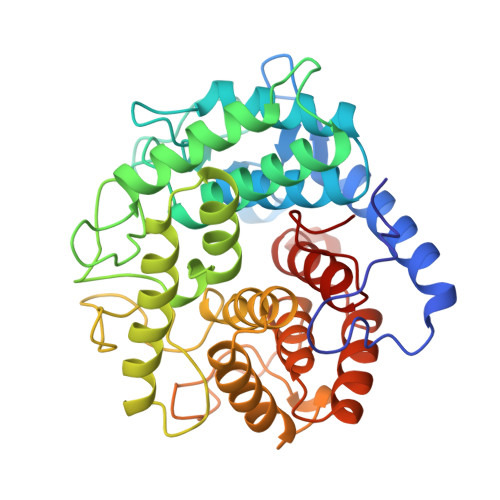The crystal structure of endoglucanase CelA, a family 8 glycosyl hydrolase from Clostridium thermocellum.
Alzari, P.M., Souchon, H., Dominguez, R.(1996) Structure 4: 265-275
- PubMed: 8805535
- DOI: https://doi.org/10.1016/s0969-2126(96)00031-7
- Primary Citation of Related Structures:
1CEM - PubMed Abstract:
Cellulases, which catalyze the hydrolysis of glycosidic bonds in cellulose, can be classified into several different protein families. Endoglucanase CelA is a member of glycosyl hydrolase family 8, a family for which no structural information was previously available. The crystal structure of CelA was determined by multiple isomorphous replacement and refined to 1.65 A resolution. The protein folds into a regular (alpha/alpha)6 barrel formed by six inner and six outer alpha helices. Cello-oligosaccharides bind to an acidic cleft containing at least five D-glucosyl-binding subsites (A-E) such that the scissile glycosidic linkage lies between subsites C and D. The strictly conserved residue Glu95, which occupies the center of the substrate-binding cleft and is hydrogen bonded to the glycosidic oxygen, has been assigned the catalytic role of proton donor. The present analysis provides a basis for modeling homologous family 8 cellulases. The architecture of the active-site cleft, presenting at least five glucosyl-binding subsites, explains why family 8 cellulases cleave cello-oligosaccharide polymers that are at least five D-glycosyl subunits long. Furthermore, the structure of CelA allows comparison with (alpha/alpha)6 barrel glycosidases that are not related in sequence, suggesting a possible, albeit distant, evolutionary relationship between different families of glycosyl hydrolases.
Organizational Affiliation:
Unité d'lmmunologie Structurale and URA 1961 CNRS, Institut Pasteur, Paris, France.
















